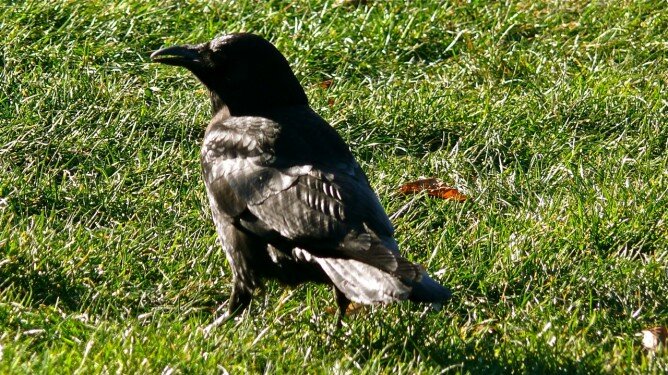Crows. It’s not your imagination. They are out to get you. Or at least, scare you off.
It’s that time of year when territorial crows are looking out for their young, and feeling ill-tempered enough to take a dive at just about anyone who comes to close to the nest or their crow babies. Joggers. Ballard residents. Even cops. Like bullies on a corner, these birds do not care about your health, Scandinavian family tree, or badge–unless it’s very shiny.
Part of the human-crow elbow-room issue could be due to population pressures (I speculate). Seattle’s crow population seems to have grown “exponentially” between 1970 and 2000, according to one survey. Thereafter, it seems to have reached a plateau, and if that’s true, it could indicate maximum-crows-per-square-inch, meaning territory is at a premium, and crows may be forced to nest in areas that are more public than they’d prefer.
No matter how you look at it, there’s a lot of crows out there. The Seattle Audubon Society counted “18,180 American crows in the greater Seattle area” in 2009.
And if you’ve ever upset one of them, you’ve upset a lot of them. Seattle’s crow whisperer, the University of Washington’s John Marzluff, has studied how crows specifically remember a threatening face, and transmit that information to other crows.
When a crow loudly scolds you, it’s also calling to others to note the threat. Any crows in the area will join in harassing you out of the vicinity. Marzluff says the do-not-disturb zone is some 330 feet. But even afterwards, through the power of social networks, any of those crows will recognize you as a threat, and pass along that information to crows nearby:
“Our study shows the memory lasts at least five years and counting,” Marzluff said. “Individual crows that are adults can live 15-40 years in the wild (most die when young, but those that make it to adulthood can live a long time) and they probably remember important associations they have formed for much of their lives.”
They are the eye in the sky, looking at you. They can probably read your mind. For a good example of what scolding crows sound like, here’s “When Crows Attack.”

